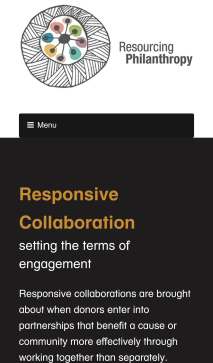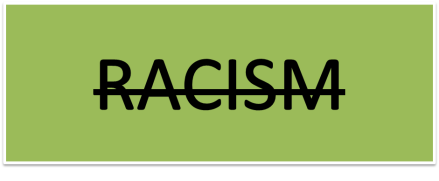Gabrielle Ritchie
Director, The Change Room
22nd September 2016
South African civil society is broad and diverse, and its funding requirements can feel somewhat like a bottomless pit. This is particularly highlighted in the arena of social and welfare services, previously provided by the state with some support from non-governmental organisations. Increasingly though, NGOs are the only structures providing any kind of social support such as counselling, trauma support, wellness services, and health information and related services at community level, and they are receiving wholly inadequate levels of funding for this critical community health provision.
Since citizen engagement and civic action take place increasingly through the formal structures of nonprofit organisations, NPOs in South Africa are currently the key vehicle for effecting systemic change. Given the scale of the current non-NGOised student movement across South Africa’s tertiary institutions, it remains to be seen how effective such movements will be in achieving and sustaining the desired change without formalised funding and grant management. This is an important area for monitoring, towards understanding the dynamics and efficacy of non-funded movements.
While there are many social movements and organisational forms which don’t require funding to effect their mission, it is certain that for social change and development organisations to be effective in achieving their aims, effecting change and delivering services, funding support is required. This begins to map out the basic link between social change nonprofits and philanthropy – where both endeavours are points on continuum of change and work best as partners in development.
Nonprofits are central to ensuring and securing a positive and progressive social development agenda. Likewise, philanthropy is also critical in achieving social change, through (amongst other practices) funding support for the work of non-profits and, where appropriate, working in partnership to craft strategies and programmatic agendas for change. Resourcing Philanthropy is an online resource that provides an extensive review of The Atlantic Philanthropies Reconciliation and Human Rights funding programme in South Africa.
This resource delves into the many ways in which funders can work with organisations, co-craft agendas, convene donors and grantees, use their power-linked networks to leverage additional influence and support, and provide operational support (among many other grantmaker strategies and practices). This is little-explored territory in the South African context, and the Resourcing Philanthropy platform provides a first effort at really unpacking how a grantmaker’s approaches worked (in this case The Atlantic Philanthropies) and the ways in which their grantmaking strategies achieved measurable change and positive impact.
Partners for Change
Nonprofits, as change partners working with philanthropic funders, serve also as the operational vehicle through which funders are able to craft and service their own funding and change agendas. A number of important questions arise in starting to examine the potential for organisational-philanthropy partnerships in effecting real change. These include (as a starter list):
- What is the change we want to achieve?
- How does this map to the context, and to current change agendas?
- Who sets these agendas, and who should be part of this agenda-setting process?
- Is there potential for a shared social change agenda, when there might exist inherent tensions between funding agendas and organisational agendas?
- What is the role of citizens, government, business and philanthropy in crafting and effecting social change?
- What is the role of philanthropy and of donors in achieving this, and how can this role best be played?
The philanthropic practice of giving, or grantmaking, or donating (and so on) inevitably carries with it the deep dynamic of an unequal power relationship. This is likely to be the case in instances of giving and receiving between individuals; between entities; within a community – as much as it creates a power dynamic if this relationship exists between countries. In discussing and practicing philanthropy, funding and grantmaking, these dynamics must be considered and tackled in efforts to build partnerships to effect social change and development.
For nonprofit organisations, this funding dynamic is essential to take into account in how NPOs position themselves in a potential funding relationship. As formal organisational structures, nonprofits are the entities that provide the platform, or conduit, or vehicle through which foundations, trusts, corporates and government are able to achieve their goals.
Too often, NPOs understand themselves (often in spite of some stern self-talk) as the recipients of good will, rather than as partner agents in a trajectory of change. More and more, NPOs need to shift their frame of perception and positioning, to disrupt fundamentally the begging bowl approach. Philanthropic funders could contribute here by challenging themselves more thoroughly on what a “disruptive philanthropy” might look like, and how they can genuinely contribute to a new, transformational kind of funding practice, adopting strategies that have a greater chance of achieving social change.
NPOs, as part of civil society, occupy pole position when it comes to shaping how nonprofits operate and position themselves, and how they can grow and strengthen civil society. A core dynamic in this is the NPO/ funder relationship. Philanthropists therefore need to tackle the power dynamic inherent in their fund-holding position, in an effort to forge real partnerships based on mutual interest, shared values and agendas, and a clear vision of a desired future.
Philanthropy (foundations, private individuals, and wealth management advisors, amongst others) needs to take on the task – with donor and grantee partners – of pursuing and building a new kind of funding approach and grantmaking practice in South Africa. Achieving change, in line with a social justice approach to development, cannot only be about the work of nonprofits. It must, necessarily, be built also on a more inclusive, consultative, progressive approach to grantmaking.
Previous articles that touch on this topic include those listed below:
https://philanthropediasa.wordpress.com/2016/04/01/knowledgeonphilanthropy/
GrantCraft is one of my most favourite resources for guides on, and insights into, grantmaking practice, the challenges of effective grantmaking, and a range of related topics. Those listed below focus specifically on partnerships:
http://www.grantcraft.org/videos/supporting-a-new-partnership
http://www.grantcraft.org/curated-content/cross-sector-partnership-formation
http://www.grantcraft.org/guides/supporting-grantee-capacity
The article below is an excellent challenge to whether grantmaker-grantee partnerships are in fact possible, or are currently more fiction than fact:
http://www.blueavocado.org/content/foundation-nonprofit-partnerships-fact-or-fiction





